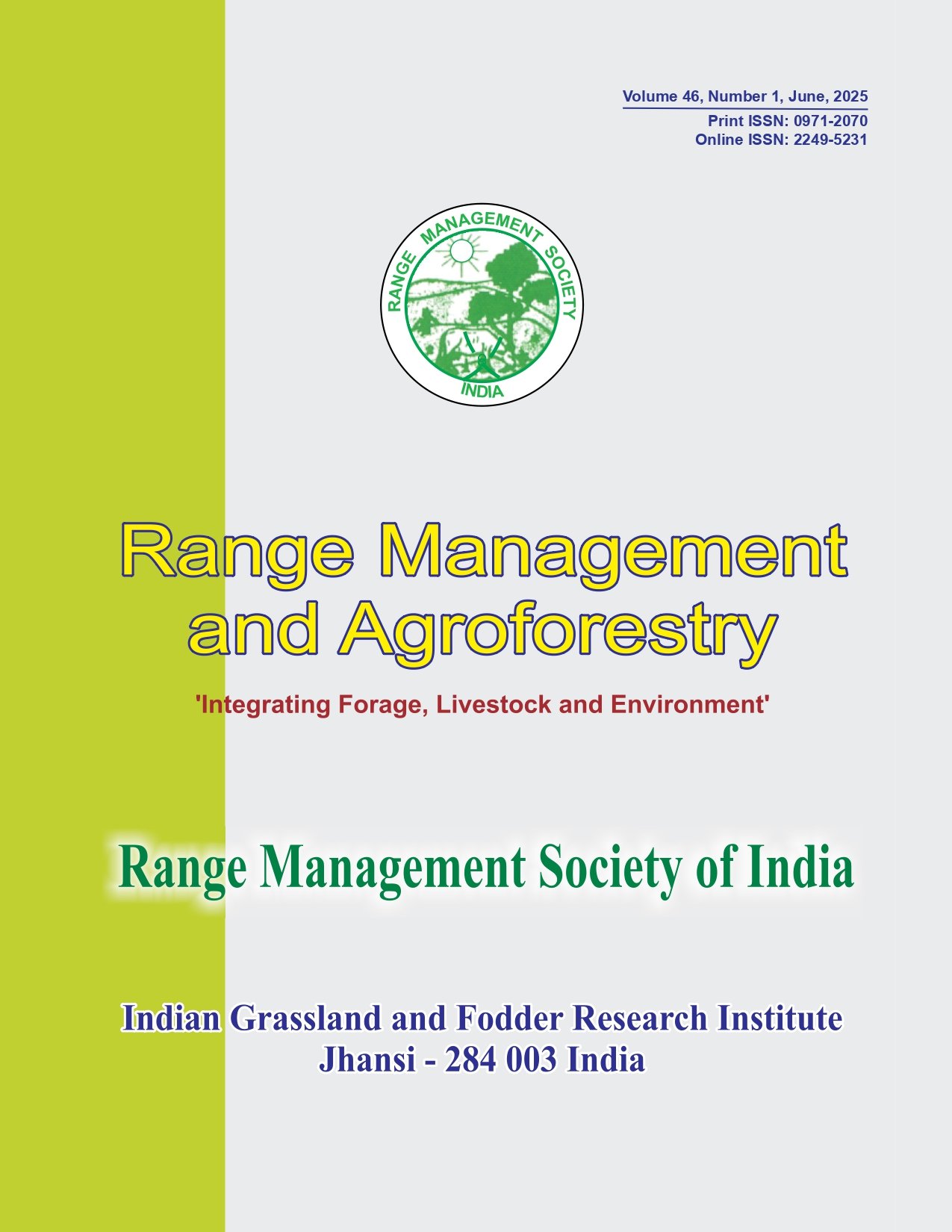Production potential and economics of multi-cut forage sorghum (Sorghum sudanense) with legumes intercropping under various row proportions
Keywords:
Competition functions, Crude protein yield, Economics, Forage yield, Intercropping, Land-equivalent ratio, Legumes, SorghumAbstract
A field experiment was conducted during the summer seasons of 2007 and 2008 at Sabour, Bihar to assess the production potential and economics of intercropping of forage sorghum (Sorghum sudanense Stapf) with cowpea [Vigna unguiculata (L.) Walp.], clusterbean [Cyamopsis tetragonoloba (L.) Taub.] and ricebean [Vigna umbellata (Thumb) ohwi and ohashi] under four row proportions, viz. 1:1, 1:2, 2:1 and 2:2. Green and dry fodder yield of both the component crops were substantially reduced under intercropping system compared with their sole crop yield. Pooled analysis of 2 years showed that intercropping of sorghum and cowpea with a row ratio of 2:2 recorded significantly higher total green fodder (59.6 t/ha), dry matter (14.88 t/ha) and crude protein yield (1.45 t/ha), as well as net returns (RS.28,570/ ha) and benefit: cost ratio (2.76) in comparison to the other treatments except sorghum + ricebean planted in the row ratio of 2:2. The association of sorghum and cowpea in row ratio 2:2 also showed the highest land equivalent ratio (1.45), price equivalent ratio (1.50), relative crowding coefficient (7.60) and lowest value of competitive ratio (1.29), followed by sorghum + ricebean in 2:2 row ratio. Among the component crops, sorghum was more competitive and aggressive than legume intercrops. However, maximum aggressivity index (0.53) and competitive ratio (3.42) were obtained with sorghum, when grown in association with clusterbean in row ratio 1: 2. Thus, intercropping of fodder sorghum with cowpea or ricebean both in 2:2 row ratio may be adopted for higher productivity, better quality and profitability during summer season.



